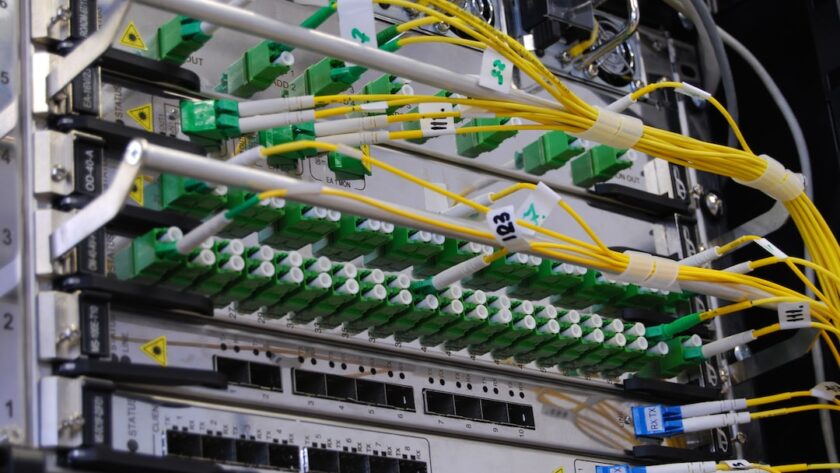Traditional WAN networks require the purchase and installation of circuits to route data. This limits the flexibility of branch offices and increases costs.
SD-WAN can prioritize traffic based on application and device. It offers real-time high-traffic monitoring and automated switchovers during brownouts.
SD-WAN allows businesses to connect to the cloud with confidence. This includes the connectivity required by your Point-of-Sale (POS) applications hosted in the cloud.
Cost
Traditional WANs require significant infrastructure and resources to build, manage, and monitor. With SD-WAN explained, the control functions are decoupled from hardware and centralized on a software layer. This makes it easier to define and change policies to support new business requirements without affecting existing branches, devices, users, and applications.
In addition to enabling greater agility, cost savings are possible with an SD-WAN deployment. This is because the solution can leverage lower-cost Internet connections to connect geographically disparate offices instead of expensive MPLS or PTP links. In addition, a Software-Defined WAN implementation can use multiple network paths for performance and reliability.
An SD-WAN can also optimize bandwidth and prioritize traffic to ensure that business-critical apps have the highest quality of service. It can also increase efficiency by allowing local Internet breakout of IaaS and SaaS applications at branch offices, which can reduce costs by avoiding expensive VPN services.
An SD-WAN can also improve the user experience with a software-defined firewall that enables secure, seamless access to cloud applications. A Software-Defined WAN can provide unified security for all connected branches and data centers through one platform while eliminating the need to configure individual firewalls at each location. However, it is important to note that this technology is still relatively new and requires specialized staff to implement and manage. If your organization doesn’t have this skill set, you may need to hire a 3rd-party vendor to help with the implementation.
Performance
In a traditional WAN network, the routers use their internal database to determine how packets should be routed. This requires significant bandwidth for each lookup, creating a bottleneck during data transmission. By contrast, SD-WANs analyze the network conditions and adjust dynamically, allowing high-speed communications.
Moreover, many SD-WAN solutions allow you to eliminate costly MPLS circuits in favor of lower-cost options like broadband and DSL. This enables you to save money and scale your network plans more easily. In addition, you can reduce the number of connections and minimize hardware costs in your data centers by leveraging a single centralized management console.
You can prioritize and direct traffic to the most critical applications with an SD-WAN. This improves data transfer speeds, especially for cloud platforms with internet connectivity. The result is increased productivity and customer satisfaction.
An SD-WAN can also handle a complete transport outage by automatically routing data to temporary internet resources until the leased lines return online. This prevents downtime and ensures your employees are always connected to the cloud. For example, a technologically advanced grocery store would want to join the Point-of-Sale app to a leased line for low latency and fast performance. However, the store manager may need to access other business apps for non-critical functions. In this case, the WAN could route this traffic over the local internet and VPN to free up bandwidth for cash registers.
Scalability
A centralized SD-WAN system lets network administrators change their WAN connections in real-time. This makes it far easier to adapt to changing environmental conditions compared to traditional routers that must be programmed individually as needed.
The scalability of SD-WAN is also impressive when handling traffic from multiple points at once. This capability enables organizations to optimize the performance of applications sensitive to latency and packet loss. For example, a grocery store with a Point-of-Sale app in the cloud may require a fast and reliable connection to keep it operating efficiently. This application could be optimized to primarily connect over an MPLS link that can handle the high bandwidth requirements. Non-critical business apps like the company website and a VPN connection over the local internet or via a backup connection free up that expensive leased line for more critical use.
In addition, an SD-WAN solution layered on top of a secure broadband circuit can offer quality service levels comparable to MPLS at a much lower cost. This type of connectivity also provides a safer option for connecting to the cloud and SaaS applications. Secure connections can prevent unauthorized parties from intercepting and using data for nefarious purposes. This is a big concern when sending private information across the internet, such as credit card numbers or medical records, over unsecured Wi-Fi networks.
Security
Unlike traditional WAN networks that rely on hardware to connect sites, SD-WAN is a software-based approach that can be installed and run in pre-existing network environments. It delivers centralized control over the entire networking environment and uses a virtual overlay to simplify the WAN architecture.
It enables branch offices to access cloud and SaaS applications directly without backhauling traffic to the central office. This reduces latency and improves application performance. It also supports unified communications based in the cloud, such as teleconferencing and VOIP, with no significant manual configuration requirements at each site.
A centralized management platform allows administrators to set and manage policies for traffic routing, prioritization and security. This eliminates the need for complex configuration at each site and enables each network to quickly and automatically recognize available connections and begin intelligent traffic routing. It’s a good idea to purchase a solution from a vendor that offers integrated technology, services and security with their appliance or software offerings.
A well-designed WAN will provide secure and reliable connectivity to your cloud and on-premise applications. It will handle a total transport outage seamlessly and provide sub-second failover to prevent disruption of business-critical applications such as voice and video communications. It will also use advanced path conditioning techniques to reconstruct packets lost in transit, avoiding the need for re-transmission, reducing latency and improving the end-user experience.




